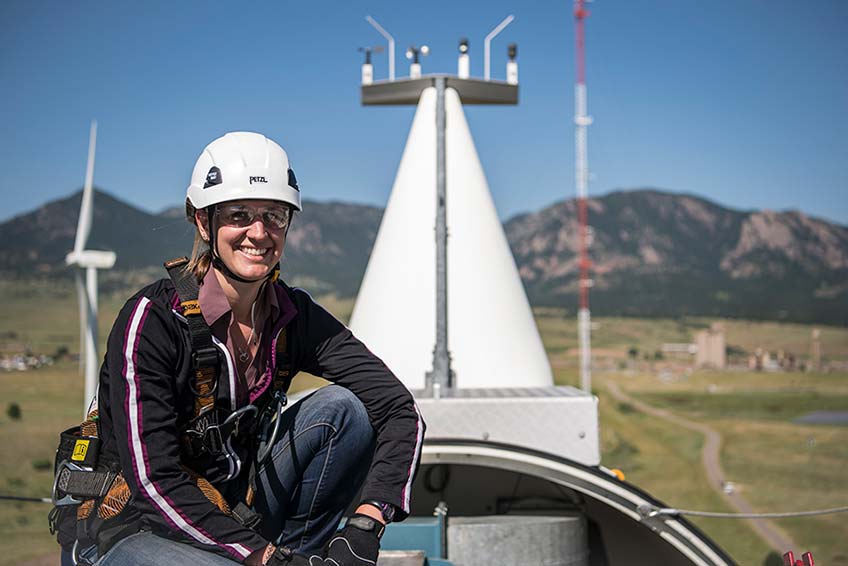NREL Boosts Speed and Accuracy of Wind Plant Optimization Model
The National Renewable Energy Laboratory (NREL) has released a new version of its FLOw Redirection and Induction in Steady State (FLORIS) model for wind plant performance optimization. The latest update combines the new three-dimensional physics of the curl wake steering model with the analytical Gaussian model’s speed to enhance FLORIS’s ability to accurately design and analyze wind farm control strategies for larger arrays of turbines.
FLORIS, which was co-developed by NREL and the Delft University of Technology, is an open-source platform available for download and collaborative development. Since 2018, more than 2,000 users have accessed the tool to inform turbine operation as well as wind farm design. By optimizing flow control strategies like wake steering, FLORIS enables existing wind energy facilities to improve productivity and increase profits.
“We’ve seen interest in wind farm controls explode as our numbers on efficiency gains and load studies have come out,” said NREL Senior Researcher Jennifer King. “There’s a lot of excitement around finding new ways to make wind farms more efficient. One way we can do that is to make sure that our models accurately capture what is happening in a wind farm when you apply these advanced control strategies.”
Last year, NREL updated the FLORIS framework to include the curl model, which models the counter-rotating vortices that occur when a turbine is intentionally misaligned from the incoming flow to deflect its wake away from downstream turbines. The curl model more accurately captures the benefits of wake steering observed in the field by accounting for these turbulent flow structures that occur when a turbine is yawed.

Peak performance: King and her colleagues advance control strategies to improve the performance of wind farms. Models like the Gauss-curl hybrid model better predict the results of turbines working together to maximize the power of an entire wind farm, rather than one individual turbine. Photo by Dennis Schroeder, NREL
“While the curl model gave us a better representation of wake steering, its complexity made it too slow for real-time optimization or year-long simulations,” said King. “We appreciate that the Gaussian wake model is super-fast, but it doesn’t account for the curl effects.”
The Gaussian wake model takes a simplified approach to the Navier-Stokes equation, a model that describes the motion of fluid dynamics like wind turbine wakes. With only four physical parameters, the Gaussian model solves simplified and linear Navier-Stokes equations. But what if you could have the best of both worlds?
King and NREL Senior Engineer Paul Fleming came up with the idea of using a hybrid model while talking about this challenge at a wind energy conference. By combining an approximation of the curl model with the computational efficiency of the Gaussian wake model, the hybrid Gauss-curl model now provides FLORIS users with increased capabilities for optimizing a site’s wind power production.
This FLORIS software update comes at an opportune time for the industry. Just recently, Siemens released the first commercial wake steering product.
“We put out validated open source software, which plays an important role in allowing the wind industry to compare their models and assess the wider application of advanced wind farm control strategies,” King said.
For more information on the new model, see the FLORIS 1.1.14 documentation or read the new discussion paper in Wind Energy Science. If you would like to receive periodic updates on FLORIS, or for more details on using or contributing to the FLORIS open-source framework, please send an email to [email protected].
Last Updated May 28, 2025
